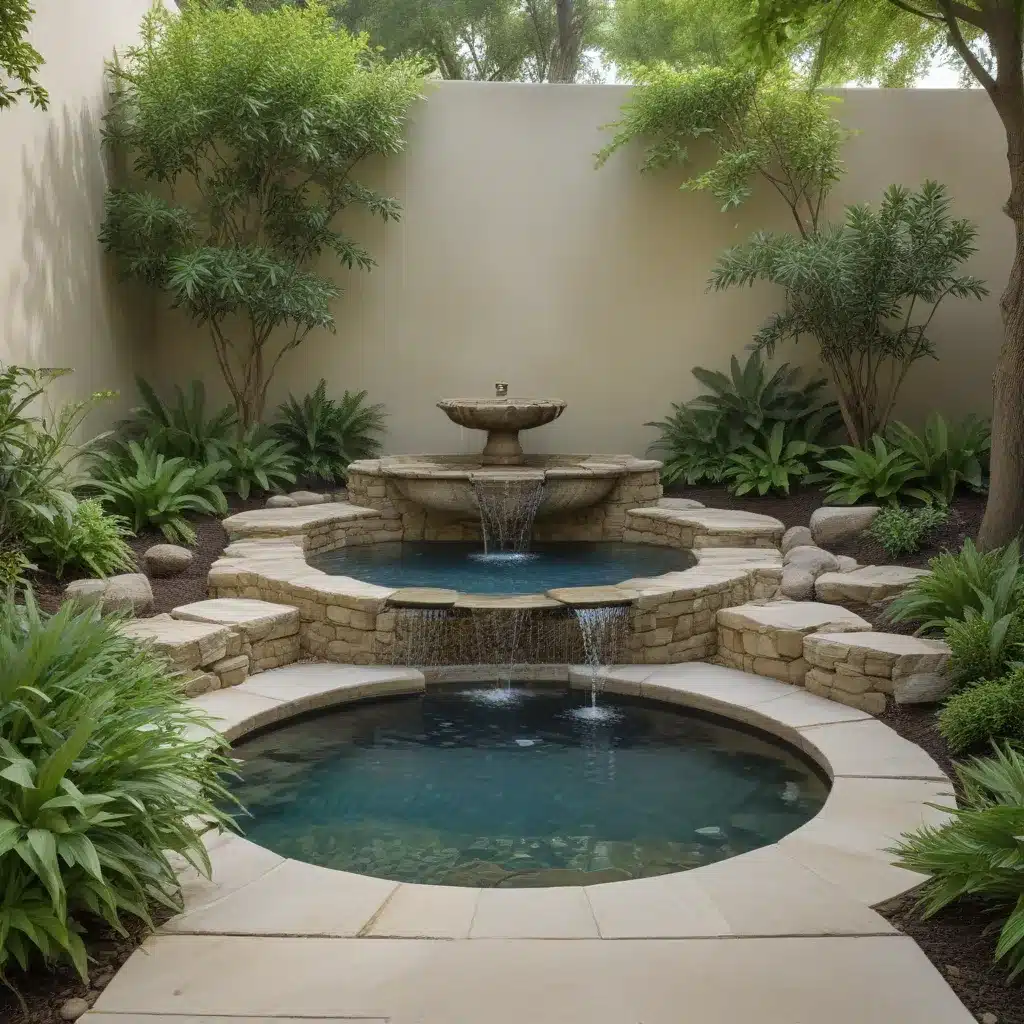Unlock the Secrets of Neuroarchitecture: Designing for a Calmer, Happier Mind
You know the feeling – you step into a space and instantly feel more relaxed, focused, or even inspired. It’s not just a coincidence. There’s a whole field of study dedicated to understanding how our surroundings shape our thoughts, emotions, and overall well-being. Welcome to the world of neuroarchitecture.
Neuroarchitecture is the intersection of neuroscience and design, and it’s about to change the way we think about our living and working spaces. It’s all about crafting environments that positively impact our mental health – from boosting productivity to cultivating a sense of calm.
As someone who’s always been fascinated by the connection between our minds and the spaces we inhabit, I’ve been diving deep into the principles of neuroarchitecture. And let me tell you, it’s a game-changer, especially when it comes to creating the ultimate serene oasis – one that’s complete with soothing water features and tranquil fountains.
The Power of Light and Space
Neuroarchitecture starts with understanding how fundamental design elements like light and space can influence our mood and mindset. It’s not just about making things look pretty; it’s about crafting environments that truly feed our psychological well-being.
Take light, for example. Natural light has the power to boost our mood and increase productivity. That’s why you’ll often find big windows and open spaces in designs that prioritize mental well-being. And it’s not just any light – the quality, intensity, and even the color of the light can play a role in how we feel.
But it’s not just about light; space also has a significant impact on our minds. Open spaces can make us feel free and calm, but too much openness without a clear purpose can feel overwhelming. On the other hand, cramped spaces can make us feel anxious and trapped. It’s all about finding the right balance, creating areas that give us room to breathe while also offering cozy spots for comfort and relaxation.
Bringing Nature Indoors: Biophilic Design
One of the key principles of neuroarchitecture is the idea of Biophilic Design – the concept of incorporating elements of nature into the built environment. And let me tell you, this is where the magic happens when it comes to creating serene spaces.
Bringing the outdoors in, whether through natural materials, plants, or water features, can have a profound impact on our mental well-being. It taps into our innate connection to the natural world, reducing stress and increasing our sense of calm and focus.
One of the best ways to incorporate Biophilic Design is through the use of indoor gardens and preserved plant installations. Imagine stepping into a space where the walls are adorned with verdant moss or a stunning preserved garden. It’s like bringing the tranquility of a secluded forest right into your home or office. And the best part? No green thumb required! These maintenance-free solutions allow you to enjoy the beauty and serenity of nature without the hassle.
The Power of Color and Texture
But neuroarchitecture isn’t just about light, space, and nature. It also delves into the impact of color and texture on our minds and emotions.
Certain colors can have a calming or energizing effect, depending on the desired mood of the space. Soft, cool colors like blues and greens are often used in relaxation-focused areas, while warmer hues can spark creativity and excitement.
And it’s not just the color itself, but also the saturation and brightness that matter. A muted blue can soothe, while a neon blue might feel more electric and less calming.
Texture also plays a crucial role in neuroarchitecture. Natural materials like wood, stone, and even preserved moss can bring a sense of calm and connection to the earth, while soft, plush fabrics invite relaxation and comfort. It’s all about understanding how our senses respond to different surfaces and incorporating them strategically to create the desired atmosphere.
Bringing It All Together: A Serene Oasis
So, how do you take all these neuroarchitecture principles and apply them to create the ultimate serene space, complete with water features and tranquil fountains? Let me give you a glimpse into my own journey.
When I decided to renovate my backyard, I knew I wanted to create a true oasis – a place where I could escape the stresses of daily life and truly unwind. And that’s when I discovered the power of water features and fountains.
The Infinity Bowl Fountain from EasyPro quickly became the centerpiece of my new outdoor retreat. With its smooth, cascading water and rippled edges, it instantly transported me to a state of tranquility. And the best part? It’s a complete kit that’s easy to install, so I didn’t have to worry about any complicated setup.
But I didn’t stop there. I incorporated other elements of neuroarchitecture to create a truly serene environment. I chose soothing, earthy tones for the walls and furniture, and added a vertical garden made with preserved plants to bring the outdoors in. The result? A space that not only looks visually stunning but also feels like a sanctuary for my mind and body.
The Future of Design is Neuroarchitecture
As I’ve discovered, neuroarchitecture isn’t just a passing trend – it’s the future of design. By understanding the deep connections between our brains and our surroundings, we can create spaces that don’t just meet our physical needs but also nourish our mental well-being.
And when it comes to A1 Landscape Construction, they’re at the forefront of this movement. Their team of experts understands the power of water features, fountains, and Biophilic Design to transform outdoor spaces into true oases of tranquility.
So, if you’re ready to unlock the secrets of neuroarchitecture and create your own serene sanctuary, don’t hesitate to reach out to the team at A1 Landscape Construction. Your mind (and your soul) will thank you.




